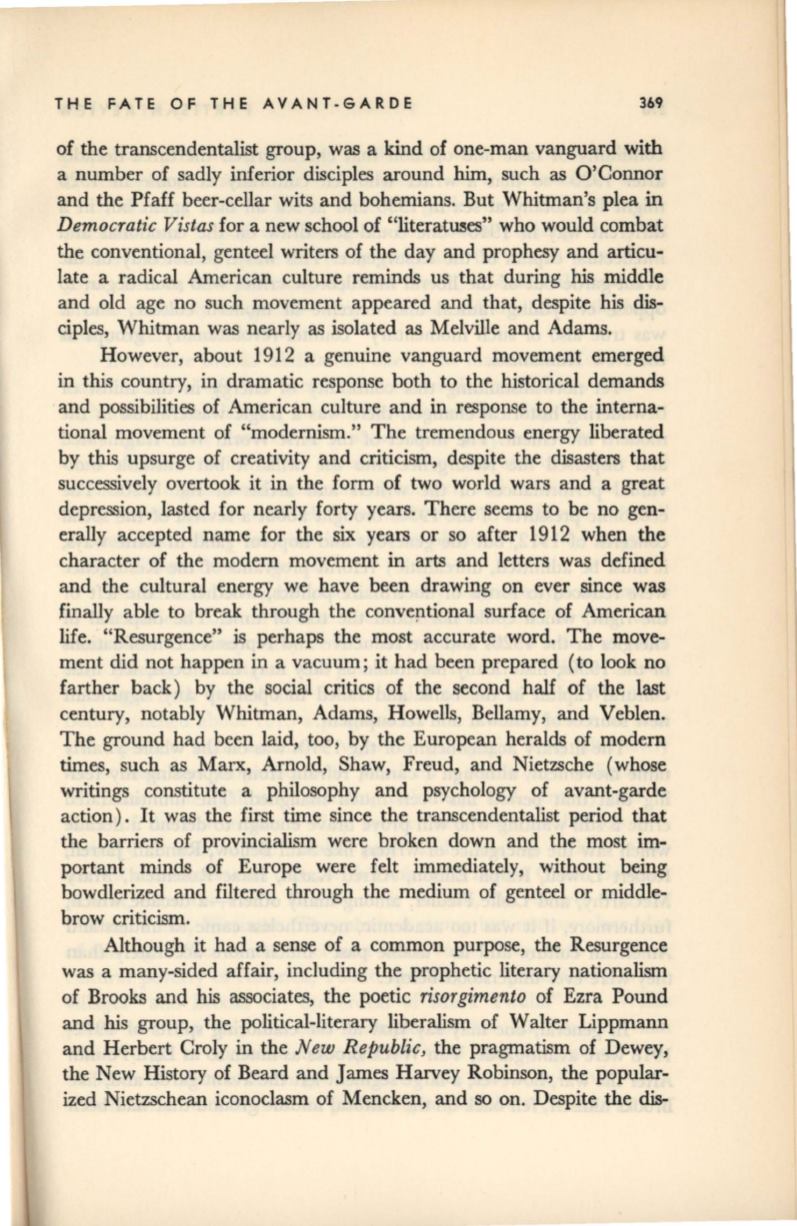
THE FATE OF THE AVANT-GARDE
369
of the transcendentalist group, was a kind of one-man vanguard with
a number of sadly inferior disciples around him, such as O'Connor
and the Pfaff beer-cellar wits and bohemians. But Whitman's plea in
Democratic Vistas
for a new school of "literatlllles" who would combat
the conventional, genteel writers of the day and prophesy and articu–
late a radical American culture reminds us that during
his
middle
and old age no such movement appeared and that, despite his dis–
ciples, Whitman was nearly as isolated as Melville and Adams.
However, about 1912 a genuine vanguard movement emerged
in this country, in dramatic response both to the historical demands
and possibilities of American culture and in response to the interna–
tional movement of "modernism." The tremendous energy liberated
by this upsurge of creativity and criticism, despite the disasters that
successively overtook it in the form of two world wars and a great
depression, lasted for nearly forty years. There seems to be no gen–
erally accepted name for the six years or so after 1912 when the
character of the modern movement in arts and letters was defined
and the cultural energy we have been drawing on ever since was
finally able to break through the convep.tional surface of American
life. "Resurgence" is perhaps the most accurate word. The move–
ment did not happen in a vacuum; it had been prepared (to look no
farther back) by the social critics of the second half of the last
century, notably Whitman, Adams, Howells, Bellamy, and Veblen.
The ground had been laid, too, by the European heralds of modern
times, such as Marx, Arnold, Shaw, Freud, and Nietzsche (whose
writings constitute a philosophy and psychology of avant-garde
action). It was the first time since the transcendentalist period that
the barriers of provincialism were broken down and the most im–
portant minds of Europe were felt immediately, without being
bowdlerized and filtered through the medium of genteel or middle–
brow criticism.
Although it had a sense of a common purpose, the Resurgence
was a many-sided affair, including the prophetic literary nationalism
of Brooks and his associates, the poetic
risorgimento
of Ezra Pound
and his group, the political-literary liberalism of Walter Lippmann
and Herbert Croly in the
New Republic,
the pragmatism of Dewey,
the New History of Beard and James Harvey Robinson, the popular–
ized Nietzschean iconoclasm of Mencken, and so on. Despite the
dis-


